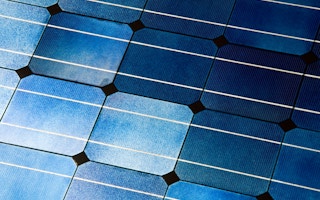The pace of consolidation in the solar manufacturing industry will accelerate in the next three years as the cost of the technology declines and installations surge, the founder of the fourth-biggest solar-panel maker said.
Trina Solar Ltd Chairman Jifan Gao said he expects three to five “leading” solar companies to remain in China by 2017, with 80 per cent of the country’s market share. Currently, there are about a dozen companies with capacity to produce more than 1 gigawatt of solar cells a year.
“Consolidation will continue,” Gao said January 25 in an interview at the World Economic Forum in Davos, Switzerland. “We’ve only seen the first stage. That will be a good situation. This will be achieved by mergers and acquisitions.”
Solar-cell prices have fallen 70 per cent since 2010 as the expansion in production capacity outpaced growth in demand. That squeezed profit margins across the industry and pushed the world’s biggest manufacturer, Suntech Power Holdings Ltd, into bankruptcy proceedings in China.
“
Solar-cell prices have fallen 70 per cent since 2010 as the expansion in production capacity outpaced growth in demand
Yingli Green Energy Holding Co, Suntech and Canadian Solar Inc were Trina’s largest competitors in panel-making capacity in 2012. The Changzhou, China-based company ranked third worldwide in 2010 and 2011.
Trina posted a profit for the first time in more than two years in the third quarter. Gao said he expects earnings to increase as sales climb and cost-controls hold. The company’s shares have more than tripled since November.
Installations Expand
“I see a 20 per cent to 25 per cent annual increase in installations across the industry, and Trina will certainly beat the average,” Gao said. “Our revenue and profits should also grow, in line with such market expansion.”
The shakeout of the past three years forced Q-Cells SE of Germany to sell itself and US Treasury-backed Solyndra LLC into liquidation. Chinese manufacturers survived because they cut costs more quickly, according to Gao.
“It’s not about government subsidy,” he said. “We don’t get as much subsidy as for example German companies. It’s also a mistake to think that China Development Bank loans are cheaper than loans from commercial banks. It’s about the same.”
While Trina isn’t considering selling itself, other solar manufacturers may favour a merger with a company such as Guodian Technology & Environment Group Corp, a supplier of renewable-energy equipment to power generators, Gao said. That would be more logical than a takeover by a major oil company such as China Petroleum & Chemical Corp, or Sinopec, he said.
Not Sinopec
“In China, it makes sense for utility companies such as Guodian to expand into solar because that’s a vertical integration,” he said. “It doesn’t make too much sense for the likes of Sinopec.”
Gao expects the industry to boom as the cost of solar developments falls further and the technology brings electricity to more remote areas.
“We should also see the use of solar in many emerging markets in Africa and Southeast Asia where the traditional electrical infrastructure isn’t good,” Gao said. “Solar could become the main source of electricity for them.”










